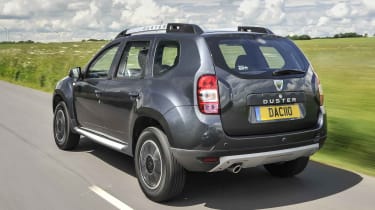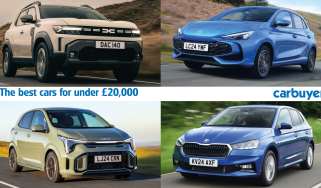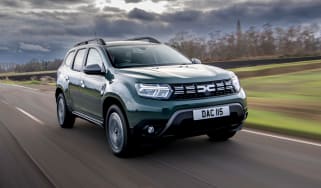Dacia Duster SUV (2012-2018) - MPG, running costs & CO2
If you compare the Dacia Duster to a typical supermini, it looks pricey to run, but next to SUV rivals, it’s not so bad
While the Dacia Duster can’t claim any world-beating efficiency figures, it comes good when you view its running costs in context. Many of its rivals offer better fuel economy and lower road-tax bills, but they also cost an awful lot more to buy in the first place. And because you’ll have spent a relatively small amount on your Duster in the first place, you’ll find it’ll have lost less value when the time comes to sell.
Dacia Duster MPG & CO2
The 1.6-litre SCe 115 petrol engine is only available in Access and Ambiance models towards the bottom of the Duster range. It’s a fairly old-fashioned engine and can manage 44.1mpg in two-wheel-drive form. Its CO2 emissions are 145g/km, but choose a four-wheel-drive version and economy falls to 41.5mpg, while CO2 emissions rise to 155g/km.
Go for the more powerful 123bhp turbocharged 1.2-litre TCe 125 petrol and things are a little better, with CO2 emissions ranging from 138g/km for front-drive models to 145g/km for the four-wheel-drive version. Fuel economy is 46.3 or 44.1mpg. You can only have this engine in the top two trim levels, however, so you have to spend more to get it.
The 1.5-litre diesel engine is more efficient than either of the petrols, returning an average of 64.2mpg and emitting just 115g/km of CO2 – the main reason it's our recommended engine in the Duster. If chosen with four-wheel drive, economy is reduced to 60.1mpg and emissions increase to 123g/km. In (two-wheel-drive only) automatic form, its economy drops a little to 62.8mpg, while emissions increase to 116g/km. Company-car drivers will need to make Benefit-in-Kind (BiK) contributions of 25%All Dusters, regardless of engine, gearbox or driven wheels, have an annual road-tax bill of £140.
More reviews
As with any new-car purchase, it’s worth considering whole-life costs, and thanks to the Duster’s incredibly low list price, overall running costs aren’t actually that bad. The biggest cost is depreciation – the amount of money you’ll recoup when you come to sell. The Duster will retain around 50% of its value after three years and 36,000 miles – more than the more expensive Nissan Juke (46%), Ford EcoSport (44%) and Vauxhall Mokka (41%).
Insurance group
Dacia Duster insurance groups are surprisingly low. The basic Dacia Duster Access model starts in group six, with the mid-range Ambiance model in group 10 and even the top-of-the-range Laureate – with alloy wheels, electric windows and Bluetooth connectivity – falling into groups 10 or 11. For comparison, an entry-level MINI Countryman is in group 12, while the Nissan Qashqai is in group 13 and above.
Servicing costs
The service interval on all new Dacias is one year or 12,000 miles, whichever comes sooner. Parts should be easy to come by and reasonably priced, too, thanks to the fact that many are shared with parent company Renault and can be found in many mainstream models currently on sale in the UK. A standard service will set you back £149 excluding parts.
There’s also the option of a three-year Dacia service plan, which costs £430 and covers all servicing for the first three years or 30,000 miles. This is a flat rate across all Dacia models, from the Sandero supermini to the Duster 4x4.
Warranty
All Dusters come with a three-year/60,000-mile warranty as standard, which can be extended to five years for just £395. Alternatively, you can buy a seven-year/100,000-mile warranty for £850 – allowing Dacia to rival Kia’s industry-leading warranty for a relatively small outlay.














